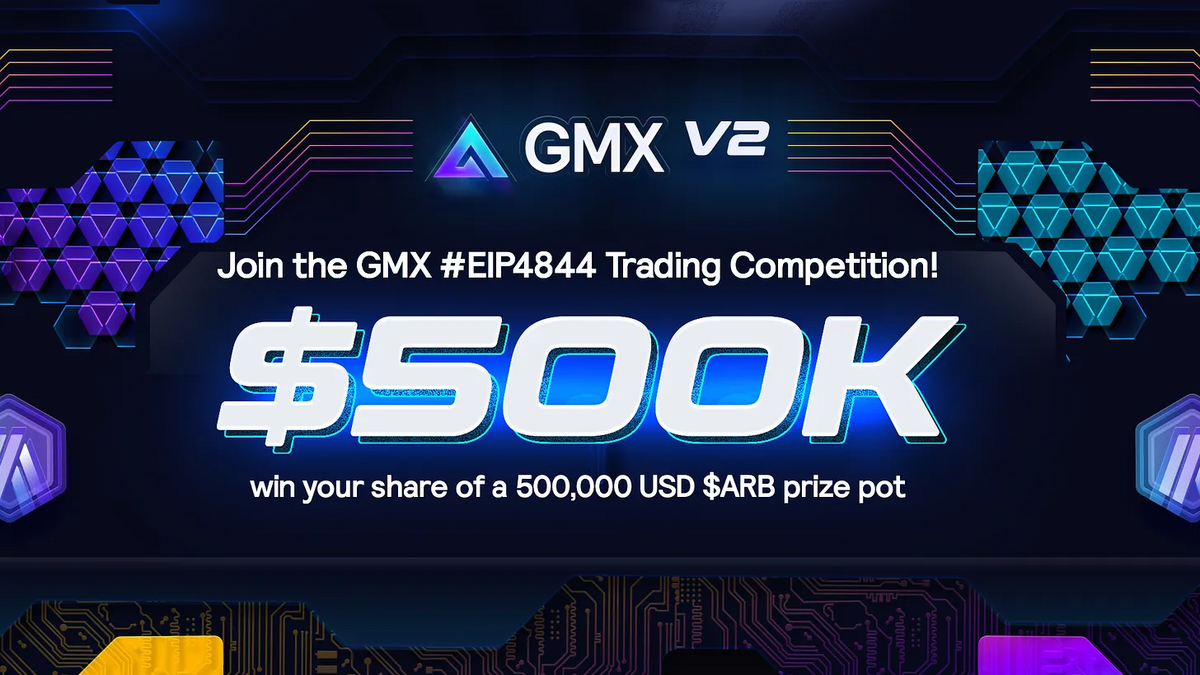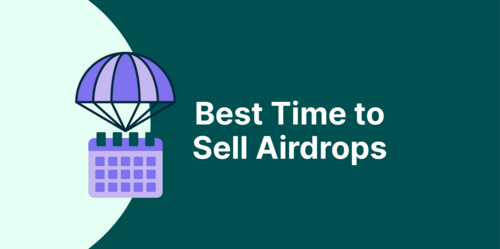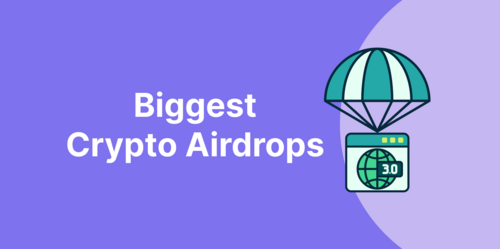
As fears of another crypto exchange collapsing have gotten the community on edge, more crypto users are turning towards decentralized perpetual protocols to satiate their demand for leveraged trading. Throughout the recent bear market, perpetual exchanges have been one of the few bright spots in an otherwise gloomy state of DeFi, providing an avenue for users to trade with leverage in a permissionless way while allowing liquidity providers to earn sustainable fees in an environment starved for yield.
Dive into our State of Decentralized Perpetual Protocols Report as we explore the history and evolution of decentralized perpetuals, how they have performed thus far, and what we can expect from decentralized perpetuals in the near future.
We’ve summarized the key highlights, but be sure to dig into the full 18 slides below.
The State of Decentralized Perpetual Protocols: Top 5 Highlights
-
Decentralized perpetual protocols have evolved to improve trading efficiency and unlock new earning possibilities for users.
-
The top six decentralized perpetual protocols dYdX, GMX, Level Finance, Kwenta, Gains Network, and Perpetual Protocol, each operate with a different model and have varied offerings, particularly when it comes to supported assets and maximum leverage.
-
Since reaching its all-time high in November 2021, open interest across top 6 decentralized perpetuals has experienced a significant decline of over 65%, with dYdX still controlling 55% of OI.
-
In line with OI, trading volumes have also fallen by 66.2% from its peak in 2021 Q4, as dYdX still dominates with 58.9% share.
-
Holder revenue distributed by decentralized perpetual protocols to governance token holders sparked the “real yield” narrative, and caused demand for these tokens to skyrocket.
1. The Evolution of Decentralized Perpetual Models

Decentralized perpetual protocols have gone through multiple evolutions to provide more efficient trading and other earning possibilities for users:
Central Limit Order Book
The first iteration of decentralized perpetuals largely mimic those of centralized perpetuals, by aggregating orders and matching buyers and sellers on an order book. While trades and liquidations are executed and settled on the network, the order book and order matching are handled off-chain.
Virtual AMMs (vAMMs)
From off-chain order books, Perpetual Protocol introduced vAMMs that utilize the same constant product formula as traditional AMMs such as Uniswap. No real assets are stored on the vAMM. Instead, they are stored in a smart contract vault which then acts as the collateral backing the vAMM.
The Great Layer 2 Migration
The first decentralized perpetuals were built on Ethereum, but network congestion and high transaction fees hampered their viability, which relied on high throughput and lower costs. As such, protocols began migrating to alt chains and Layer 2 rollups. Perpetual Protocol V2 launched on Optimism, while dYdX V3 launched on Starkware.
Protocol Fees to Token Holders
As trading volume grew, these protocols also earned trading fees which could be distributed to governance token holders via staking mechanisms as a form of incentive. These fees were paid out in ETH or stablecoins instead of more governance tokens, offering a “real yield” to holders unlike other typical DeFi yield farms
Liquidity Pool Model
Popularized by GMX, newer decentralized perpetuals began utilizing a liquidity pool model, allowing liquidity providers (LPs) to become the counterparty for traders. If traders profit from their trades, losses are socialized by the liquidity pool, and vice versa. LP tokens increase in value as trader losses are added back into the pool.
2. Comparing the Top 6 Decentralized Perpetual Protocols

The top 6 decentralized perpetual protocols each operate with a different model and have varied offerings, particularly when it comes to supported markets and maximum leverage. dYdX and Perpetual Protocol were the earliest decentralized perpetual protocols to launch, though their offerings have also evolved over time. Since the launch of GMX in September 2021, its liquidity pool model has been quickly copied by other protocols.
Decentralized Perpetual Protocols Comparison: dYdX vs. GMX vs. Level Finance and Others
| Decentralized Perpetual Protocols | Native Tokens | Liquidity Model | Supported Networks |
| dYdX | DYDX | Off-chain messages establish orderbook | Ethereum, Native blockchain on Cosmos |
| GMX | GMX, GLP | Liquidity Pool | Avalanche, Arbitrum |
| Gains Network | GNS, gDAI | Liquidity Pool | Polygon, Arbitrum |
| Kwenta | KWENTA | Synthetix Debt Pool | Optimism |
| Level Finance | LVL, LGO, LLP | Liquidity Pool | BNB Chain |
| Perpetual Protocol | PERP | Virtual AMM Model (vAMM) | V1: Ethereum V2: Optimism |
Among the top 6 decentralized perpetual protocols, all of them are on Layer-2 networks such as Arbitrum and Optimism, or utilize a Layer-2 solution such as StarkEx to facilitate faster and higher number of transactions. While each protocol has its own “home” chain, the projects are increasingly branching out to other Layer 2s or altchains as well.
Interestingly, Level Finance is the only protocol that uses a dual-token mechanism. LVL is the native utility token of the platform, which can be used for staking to earn fees and LGO tokens. On the other hand, LGO is the governance token, which allows holders to vote on proposals and shape the future of Level Finance.
3. Decentralized Perpetuals Open Interest Falls 65% Since ATH
Since hitting its all-time high in November 2021, open interest (OI) across the top 6 decentralized perpetuals has fallen significantly by over 65%, with dYdX still controlling 55% of OI.
In line with the 65.5% surge in BTC futures open interest (OI) in the latter half of 2021 from $8.76B to $14.5B on centralized exchanges, OI on decentralized perpetuals also saw a meteoric rise. After reaching an all-time high of $1.53B in November 2021, OI plummeted drastically in 2022, reaching lows of $0.28B in October 2022 before steadily recovering to $0.57B as of June 2023.
In 2021, dYdX had a monopoly on the sector, with OI surging by 540x from $2.8M to $1.4B on their platform. However, they have gradually ceded OI share to new competitors such as GMX. As of June 2023, dYdX has 50% share of OI, with GMX in second place with 30%.
Interestingly, newer protocols have started to compete for OI market share, despite 2022’s crypto downturn. Cumulatively, Gains Network, Kwenta, and Level Finance make up 18% of aggregate OI among the top 6 exchanges in June 2023.
Decentralized perpetuals account for only 3% or $600M of the $20B total OI on centralized crypto exchanges.
4. Decentralized Perpetuals Trading Volume Declines by 66.2% since 2021 Q4 Peak
Trading volume on decentralized perpetual platforms skyrocketed in the DeFi run of 2021, reaching a peak of $249.5B in 2021 Q4. Volumes have since been on a downtrend except for a spike in 2023 Q1, in line with a broad market rally. Yet, total volumes on decentralized perpetuals represent just 2.2% of the $7 trillion in quarterly trading volume on CEXs.
Decentralized Perpetual Protocols Market Share
The largest decentralized perpetual protocol dYdX dominates the market with a 58.8% share, followed by GMX at 13.4% and Level Finance at 9.2% as of June 2023.
| Rank | Decentralized Perpetual Protocols | Market Share (%) |
| 1 | dYdX | 58.8 |
| 2 | GMX | 13.4 |
| 3 | Level Finance | 9.2 |
| 4 | Kwenta | 8.7 |
| 5 | Gains Network | 7.3 |
| 6 | Perpetual Protocol | 2.6 |
In the first half of 2021, Perpetual Protocol held the majority of trading volume, peaking at 77.8% in 2021 Q2. However, in the second half of the year, dYdX gained significant traction with a strong lead in volume, surpassing Perpetual Protocol and peaking with a market share of 94.8% in 2021 Q4.
Despite their previous market dominance, both dYdX and Perpetual Protocol have ceded market share to newer protocols GMX, Level Finance, Kwenta, and Gains Network. These emerging protocols collectively accounted for 25.2% of the trading volume in 2023 Q2.
Notably, newcomer Level Finance which launched in Dec 2022, made up 9.2% of trading volume in 2023 Q2, as of June 1, 2023.
5. Holder Revenue Distribution Sparks “Real Yield” Narrative, Fuels Token Demand
By distributing holder revenue to their governance token holders, decentralized perpetual protocols like GMX, Gains Network and Level Finance kick-started the ‘real yield’ narrative, causing a surge in demand for these tokens.
As part of its Liquidity Pool mechanism, GMX introduced a fee-sharing structure since its inception in September 2021 whereby 30% of all fees are distributed to staked GMX, while the other 70% is distributed to GLP holders.
These rewards for governance token holders, along with liquid staking tokens (LSTs), kickstarted the “real yield” narrative in DeFi, as they were paid out in ETH or stablecoins instead of the protocol’s native tokens.
The fee-sharing structure was mimicked by later decentralized perpetual protocols, though they differed slightly in the actual fee-sharing calculation. Total holder revenue distributed by these protocols reached $17.7M in 2023 Q1.
This fueled significant demand for these governance tokens, sending prices skyrocketing.
Interestingly, despite dYdX having the highest volume market share, it has never redistributed any of its fees to dYdX holders. However, further utility for dYdX may be coming with their migration to their own Cosmos chain. Similarly, Kwenta follows the same approach and instead gives trading fee discounts for holding its native token.
Read the Report: The State of Decentralized Perpetual Protocols
We would appreciate a link credit to our report on CoinGecko if any of the above insights are used. A link credit allows us to keep supplying you with future data-led content that you may find useful.
If you have an account on CoinGecko, you can browse and download previous reports here! Not yet a CoinGecko user? Create an account now.
Receive daily crypto updates straight in your inbox - sign up for our newsletter today!
This report is sponsored by Level Finance, an Omni-chain Liquidity Marketplace that offers first-class user experience for traders and innovative risk management solutions for liquidity providers. Check out their dApp on BNB Chain, or their newly launched protocol on Arbitrum.

CoinGecko's editorial team comprises writers, editors, research analysts and cryptocurrency industry experts. We produce and update our articles regularly to provide the most complete, accurate and helpful information on all things cryptocurrencies. Follow the author on Twitter @coingecko









 Or check it out in the app stores
Or check it out in the app stores